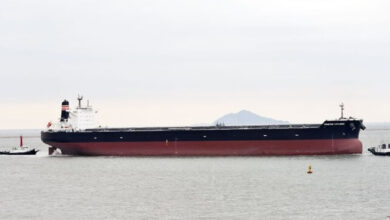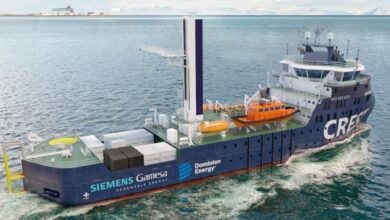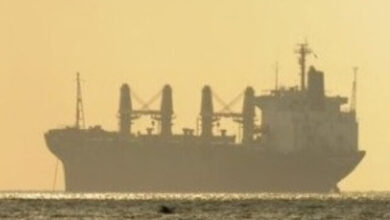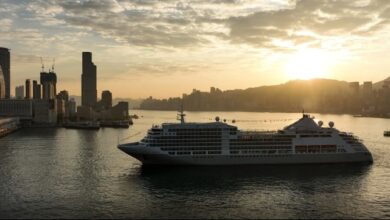Articles : Mohamed Al Asfar write :Plastic Pollution: We can do better


 Polyethylene (PE), was born accidently from ethylene in a British lab by 1933. Ethylene is mainly obtained from oil or natural gas. PE is the most common plastic on earth. It has many forms based on its properties and each form has its own uses. It’s used in almost every aspect in our lives like electronics, construction, transportation, textiles and healthcare. Global plastics production from 1950 to 2000 was 3.39 billion tons and 4.43 billion tons from 2001 to 2015 only. So, in 15 years we produced 13% more than what we produced in 51 years. Considering the amount of 0.50 billion tons that have been reproduced, the world has produced 8.3 billion tons from 1950 to 2015. Packaging industry uses the biggest share of this amount, more than 40% in 2015.
Polyethylene (PE), was born accidently from ethylene in a British lab by 1933. Ethylene is mainly obtained from oil or natural gas. PE is the most common plastic on earth. It has many forms based on its properties and each form has its own uses. It’s used in almost every aspect in our lives like electronics, construction, transportation, textiles and healthcare. Global plastics production from 1950 to 2000 was 3.39 billion tons and 4.43 billion tons from 2001 to 2015 only. So, in 15 years we produced 13% more than what we produced in 51 years. Considering the amount of 0.50 billion tons that have been reproduced, the world has produced 8.3 billion tons from 1950 to 2015. Packaging industry uses the biggest share of this amount, more than 40% in 2015.
Plastic bags were first invented by late 1950s by a Swedish company called Celloplast. The idea was a tube of plastic, sealed from the bottom to pack goods, opened from the top to insert goods into the bag and handles to carry it easily. It was known later as the “T-shirt plastic bag”. Plastic bags offered an alternative to the paper and cotton bags that were commonly used back then. To manufacture a Paper or a cotton bag, we cut trees, use more energy, more water and the final product is heavier, less flexible, more expensive and more harmful to the environment than plastic bags.
Plastic bags were first introduced in supermarkets and groceries in 1977 and by late 1970s were controlling 80% of the bag market in Europe. Safeway and Kroger, two of the biggest supermarket chains in the United States, switched to plastic bags in 1982.
Around 5 trillion plastic bags were produced in 2019. There are estimations that this number hasn’t been lower since 2002. Since 2017, the world started to consume 1 million plastic bottles every minute.
Out of the 8.3 billion tons of cumulative plastic production from 1950 to 2015:
- 12 % are still in use: mostly in construction and industrial machinery due to the long life time of the plastic used in these sectors.
- 42 % went straight to trash. Some of it ended up in landfills where it will take hundreds of years to decompose, making the soil less fertile, and leaking toxic chemicals. Exposure to these chemicals is linked to cancers, weakened immunity, birth defects and other ailments. The rest ended up in lakes, rivers, seas and oceans where it breaks down into tiny pieces. animals mistake these microplastics for food, so they eat them, resulting less movement and feeding, reduced reproductive output, death and those who don’t die, find their way to our plates. We are literally eating some of our own plastic waste.
- 43 % was incinerated: burning your plastic waste at your backyard can release a toxic smoke and a lot of dangerous chemicals that are so much harmful to you and the whole world more than any other way of disposing plastic waste. The suitable referral here is the large-scale trash incinerators with filters where plastic is exposed to high temperature and finally generate electricity and heat buildings. It’s a good way but not so affordable or popular until now. Aside from that, it’s not a real solution because burning waste doesn’t make it disappear. It turns it into ash, almost 1/5 of its weight but still there. That’s another environmental problem. Also, if we relied on incineration as a solution, then waste will become a commodity with a demand. it wouldn’t help so much with rationalizing our consumption and making our world healthier. Besides, we will keep using plastic for a long time, so why not recycling it!
- 03 % was recycled: Not all plastic can be recycled. However, the process starts with sorting plastic by its type based on which final product is being produced because each type reacts differently while recycling. After that, it gets washed, shredded or melted and then reshaped to the new product. Unfortunately, it’s cheaper to produce new plastic. Recycling wouldn’t be a wise economic decision.
Plastic is generally a lifelong material and this is the main reason behind all the problems it causes. It’s not an organic material so It doesn’t biodegrade. Bacteria do not recognize it as food so don’t break it down like they do with any other natural system. Instead, it photodegrades, a process by which chemical bonds are broken down by sunlight into smaller fragments. The thing is it will remain plastic no matter how small it is. It will not be absorbed or changed by any natural process. This means that our problem with plastic increases every day and nothing is helping.
As far as this research goes, there are no suitable alternatives that can provide the same capability or diversified usage that plastic offers. Also, we still have a long time before we develop an advanced technology that can restructure the recycling process, make it more affordable and efficient or simply make the plastic friendly to the environment. Banning or taxing isn’t also helping with prices or employment rates. Does that mean we can’t do anything about it? Actually, there is a lot that each one of us can do. we have become addicted to single-use plastic which results these severe environmental consequences. We don’t directly pay for the bag we get from the market or the grocery but we need to understand that it’s not for free. It comes with very high costs over our health and our earth. It’s enough to say that the guy who invented the plastic bag, the Swedish engineer Sten Gustaf Thulin always carried around a folded plastic bag in his pocket. We should just do the same.













